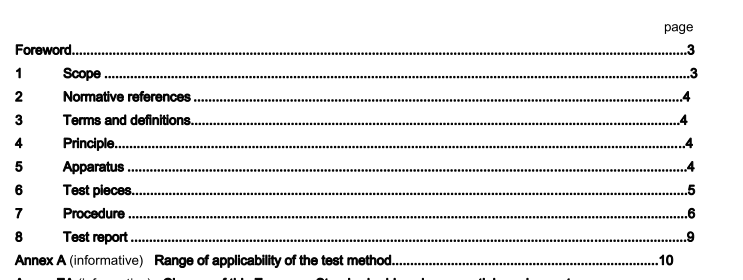BS EN 13631-11:2003 – Explosives for civil uses — High explosives — Part 11: Determination of transmission of detonation

1 Scope
This European Standard specifies a method for the determination of the ability of cartridged explosives to transmit detonation.
2 Normative references This European Standard incorporates by dated or undated reference, provisions from other publications. These normative references are cited at the appropriate places in the text, and the publications are listed hereafter. For dated references, subsequent amendments to or revisions of any of these publications apply to this European Standard only when incorporated in it by amendment or revision. For undated references the latest edition of the publication referred to applies (including amendments).
EN 13631-10:2003, Explosives for civil uses – High Explosives – Part 10: Verification of the means of initiation.
EN 13631-14, Explosives for civil uses – High Explosives – Part 14: Determination of velocity of detonation.
EN 13857-1:2003, Explosives for civil uses – Part 1: Terminology.
EN 10025, Hot rolled products of non-alloy structural steels– Technical delivery conditions.
EN ISO/IEC 17025, General requirements for the competence of testing and calibration laboratories (ISO/IEC 17025:1999).
ISO 4200:1991, Plain end steel tubes, welded and seamless — General tables of dimensions and masses per unit length.
3 Terms and definitions
For the purposes of this European Standard, the terms and definitions given in EN 13857-1:2003 and the following apply.
3.1
cap-sensitive explosive
explosive which can be initiated by a single detonator
4 Principle
The transmission of detonation is determined by the ability to transmit the detonation between two unconfined and coaxially suspended cartridges having the same diameter and separated by an air gap.
When the manufacturer claims that the explosive will need confinement in order to properly function, the transmission of detonation is determined by the ability to transmit the detonation between two cartridges having the same diameter and separated by an air gap, confined in a steel tube.
5 Apparatus
5.1 Support, for holding the cartridges, comprising a thin wooden or metal rod or other device which will not affect the velocity of detonation. When confinement of the explosive is required, the support shall hold the cartridges inside a steel tube.
5.2 Steel tube, with dimensions in accordance with ISO 4200:1991, Table 1, range of preferred thickness E.
Table 1 shows some of the listed thicknesses in range E and their corresponding internal diameters, derived from ISO 4200:1991, Table 1.
BS EN 13631-11:2003 – Explosives for civil uses — High explosives — Part 11: Determination of transmission of detonation